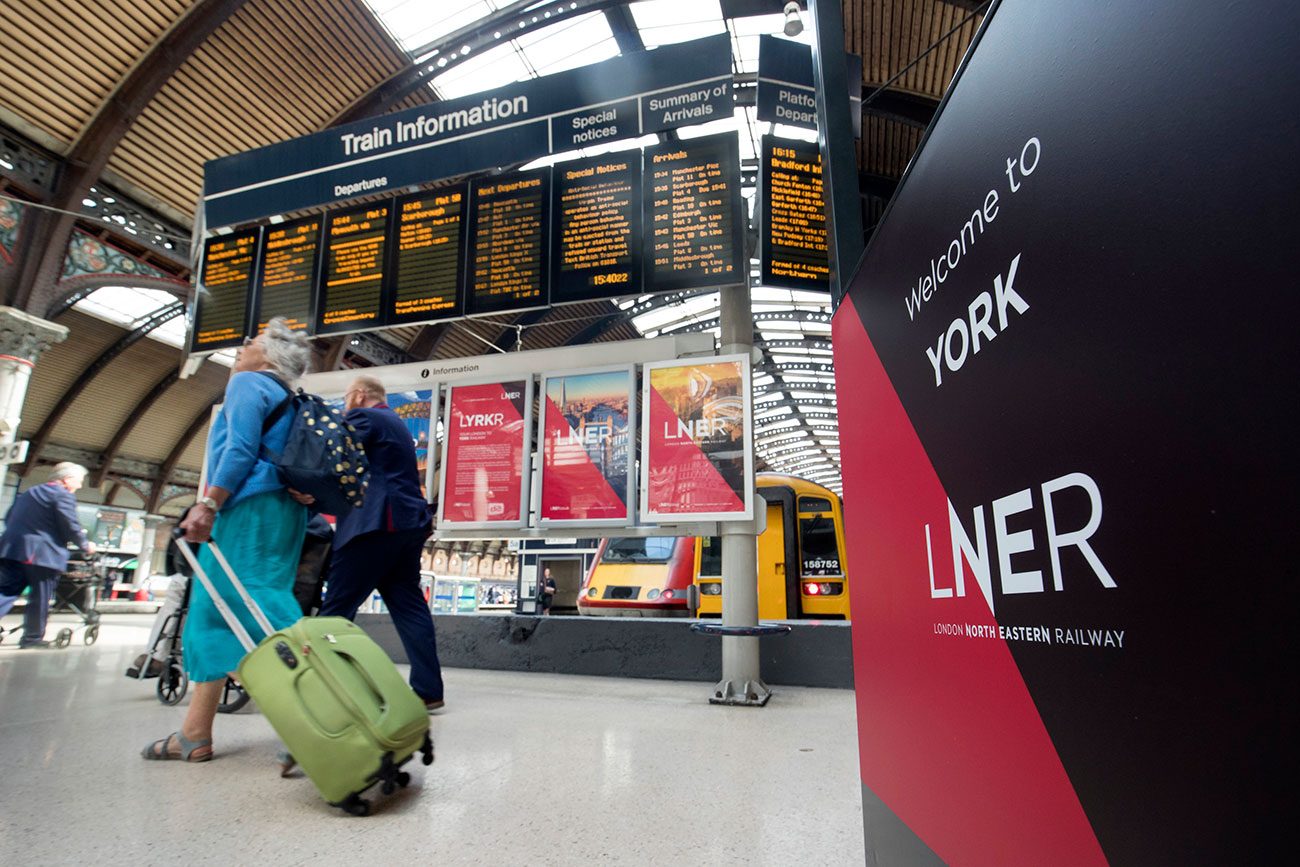The iconic London and North Eastern Railway brand – better known as LNER – looks set to be withdrawn again.
Famous in York and up and down the East Coast Main Line, LNER could soon be consigned to history – again, YorkMix understands.
Originally running from 1923 until 1948 when it became British Railway, LNER returned to the route of famous for the Flying Scotsman in 2018 when the Virgin Trains East Coast franchise ended and the Department for Transport took over.
This week ministers announced a major shake-up of rail services again in England. A new state-owned body, Great British Railways (GBR) will set timetables and prices, sell tickets in England and manage rail infrastructure.
Transport Secretary Grant Shapps said it would replace an “overcomplicated and fragmented” system. He told the BBC the changes did not mean fares would inevitably rise, but could not give guarantees.
When asked what this would mean for the names of services we are familiar with in North Yorkshire like Northern, Transpennine Express and LNER, a Government spokesperson confirmed that: “There will be one clear brand running our trains, a single website to buy tickets, and a single compensation system in England, so passengers know who is in charge.”
YorkMix has been told it will not happen immediately but it’s likely that trains will be rebranded over the next few years.
Great innovator

GBR will replace Network Rail in 2023 and the government says the new system will look more like Transport for London, with multiple operators running services under one name.
The systems will differ slightly in Scotland and Wales, where transport is devolved, but GBR will still operate in those nations.
Other changes will come more quickly with more flexible season tickets from next month for those who return to the office for just a few days a week.
Andrew McClean is assistant director and head curator at the National Railway Museum and explained the significance of LNER. He explained the brand’s significance.
“The London and North Eastern Railway came into being as a result of the Railway Act of 1921. It started in 1923 and was made up of other historic railway companies, like the Great Northern Railway, and the North Eastern Railway, which had run express trains between London, York and Edinburgh.
“LNER was a company that became very famous for its flagship express services and also great innovations such as the Mallard steam locomotive which broke the speed record and is now here at the National Railway Museum.”
After the nationalisation of the rail network in 1948 the name LNER was consigned to history but returned again in 2018 when Virgin gave up the East Coast Franchise.
Andrew added that the spirit of the pre-war LNER lives on now. “When the Azuma was launched, for instance, there was a big event at York Station with Mallard there too.
The streamlined front of the new train looks very like the 1930s locomotive. And just as with Mallard in 1938, the Azuma has been a fantastic development for the East Coast line.
“Picking up on a lot of the things that made the original company famous, the speed, the style, beautiful livery and good design. Fast and modern and very sleek.”
